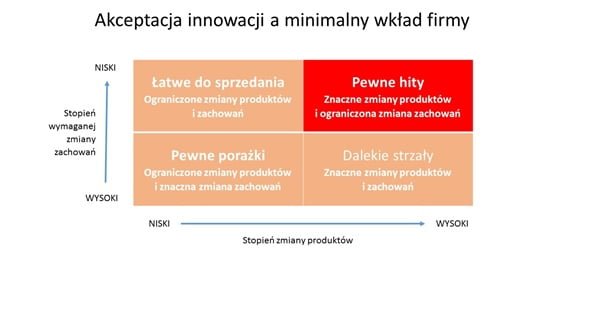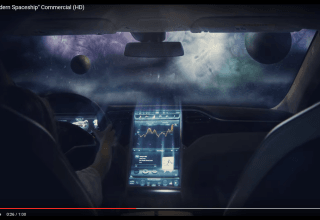Klienci z jakichś powodów nie kupują na ślepo produktów, choć marketerzy są pewni co do ich akceptacji. Przyczyny tego stanu rzeczy i sposoby przełamywania oporu klientów omawiam na przykładzie… robotyki i automatyzacji.
Nowości rynkowe są obarczone ryzykiem, jak każde inne przedsięwzięcie. Jednak pewne technologie czekały dziesiątki lat na swój czas i gdy ujrzały światło dzienne, na miliony ludzi padł blady strach. Firma konsultingowa McKinsey przygotowała zestawienie zawodów, które najprawdopodobniej wyginą, zastąpione przez roboty. Niestety, nie chodzi tu o automatyzację linii produkcyjnej, czy loty kosmiczne. Potencjał automatyzacji dotyczy wszystkich zawodów.
Prawie połowę (47%) czynności farmaceutów mogą wykonać roboty. 69% czynności kierowcy ciężarówki i 72% zadań zawodowych pilotów są w stanie obsłużyć istniejące technologie. Mniejszy potencjał automatyzacji mają czynności lekarzy (23%), pielęgniarek (29%) i prezesów (25%), przynajmniej w USA, gdzie wykonano badanie. Co istotne, wyliczono, że zautomatyzować można 74% pracy w fast – foodach, które w Stanach zatrudniają 3 miliony osób. Tymczasem roboty i technologie automatyzacji sprzedają się doskonale. Zapewniły sukces m. in. polskiej branży e-handlu.
Wracając do tematu innowacji, klęską dotyka 40-90% przypadków, w zależności od kategorii. Trudno kwestionować przewagę niektórych pomysłów nad obecnymi rozwiązaniami, np. bezosobowej taksówki, która zawiezie nas bezpiecznie, najkrótszą drogą pod wskazany adres, a także nie oszuka na rachunku. Mimo wszystko, droga do zawładnięcia serc i portfeli klientów jest daleka.
Zmiana to koszty
Dla marketerów koszty projektowania i wdrażania nowych produktów są ogromne. Minęły przecież dekady od momentu, gdy automatyzacja „przeszła” z fabryk do zastosowań konsumenckich. W którejś chwili przyszli użytkownicy tych wszystkich nowych technologii, serii produktów i usług obarczeni zostaną kosztami. Intuicyjnie myślimy o ekonomicznych kosztach przestawienia się, o opłatach transakcyjnych, kosztach nauki, kosztach starzenia się obecnej technologii.
Najdroższe są jednak koszty psychologiczne, związane ze zmianą zachowania. Klienci wyżej cenią korzyści wynikające z obecnie posiadanych produktów, niż korzyści wynikające z dostępnych produktów. Jak to się dzieje, że produkty są odrzucane, chociaż dzięki nim żyłoby się lepiej?
Psychologia korzyści i strat
Przyczyn tego stanu rzeczy szukamy nie tylko w wartości ekonomicznej samych produktów, ale w umysłach ludzi. Z pomocą przychodzi psychologia zmiany zachowań.
Korzyści i straty – jednostki w złożony sposób oceniają opcje, które mają do wyboru na rynku.
- Ludzie postrzegają atrakcyjność opcji do wyboru na podstawie ich wartości subiektywnej, postrzeganej.
- Konsumenci oceniają nowe produkty z uwzględnieniem własnego punktu odniesienia, czyli tego, co mają lub tego, z czego korzystają.
- Ludzie postrzegają każde ulepszenie (względem swojego punktu odniesienia) jako korzyści, a każde pogorszenie jako straty.
- Ludzie o wiele bardziej odczuwają straty, niż porównywalnych rozmiarów korzyści (tw. awersja do strat).
Efekt posiadania – konsumenci o wiele bardziej cenią to, co posiadają, choć mogliby z tego zrezygnować, niż to, czego nie mają, choć mogliby to zdobyć.
Tendencja do utrzymania status quo – rezygnowanie z czegoś, co już mamy wydaje się bolesną stratą i ogranicza chęć do zmiany. Tendencja ta z czasem przybiera na sile, a większość ludzi nie zdaje sobie sprawy z istnienia zachowań związanych z efektem posiadania i tendencją do utrzymania status quo.
Załóżmy, że chcemy zautomatyzować aptekę.
- Innowacja a zmiana zachowania
Sukces w zaakceptowaniu innowacji zależy od transakcji wymiany. Gdy damy konsumentowi korzyść, postrzegać to będzie jako zysk. Gdy zabierzemy mu dotychczasową korzyść, odbierze to jako stratę. Pacjenci zyskaliby czas i krócej trwałaby ich obsługa. Straciliby opiekę farmaceutyczną i możliwość rozmowy z zaprzyjaźnionymi magistrami.
- Konsumenci a zmiana zachowań
Produkty będące własnością konsumentów lub regularnie przez nich użytkowane stają się częścią stanu posiadania. Zatem innowacja jest oceniana pod względem strat i korzyści do już istniejących produktów. Rzetelne sprawdzanie recept, rekomendacja zamienników – te opcje traktowane są jako status quo. Konsumenci przeceniają straty niemal trzykrotnie, więc nie ma mowy o akceptacji innowacji, która znacznie nie przewyższy strat.
- Firmy a zmiany zachowań
Marketerzy są skłonni działać na korzyść nowych produktów. Innowatorzy działają bowiem w świecie, gdzie innowacja jest punktem odniesienia. Są wiec przekonani, że nowy produkt sprawdza się, rozpoznali zapotrzebowanie na niego i zdają sobie sprawę ze słabości obecnie istniejących opcji.
Pomysłodawcy mogą więc przeceniać nowe korzyści wynikające z innowacji. W rezultacie powstaje niedopasowanie między tym, co myślą innowatorzy, a tym czego naprawdę chcą konsumenci. Microsoft wyprodukował swój tablet około 2001 r., ale rynek zdominował iPad. Apple postawiło bowiem na mobilny system dla konsumentów, a nie na mniejszą wersję komputera klasy PC.
Jakiego rodzaju zmiany oczekujemy od konsumentów?
Sztuką jest uniknięcie konfliktu, gdy firma tworzy wartość poprzez zmianę produktu. Najlepiej więc przełożyć wartość dla klienta na korzyść dla firmy, minimalizując zmianę w zachowaniu.
Pomocna staje się macierz, na której wystarczy zidentyfikować miejsce, na którym znajduje się nasza innowacja. W zależności od dynamiki zmian można wyróżnić 4 typy innowacji. Wszystko po to, aby określić prawdopodobieństwo akceptacji nowych produktów przez klienta, a także czas i nakłady pracy potrzebne dla tej akceptacji.

Pokonać opór nabywców
Znaczna liczba innowacji wręcz wymusza istotne zmiany w zachowaniu konsumentów. Smartfon z dostępem do Internetu zmienił sposób komunikowania się między ludźmi, a komputer osobisty zrewolucjonizował pracę. Trend automatyzacji jest nieunikniony, jednak analitycy podkreślają, że maszyny zawodzą w kilku obszarach. Kreatywność i wykrywanie emocji są ekstremalnie trudne do sztucznego wytworzenia i stanowią specjalność Zespołu grey tree.
Jest szereg sposób, aby poradzić sobie z oporem klientów. Bez względu na to, w jakim miejscu macierzy znajduje się twój produkt lub technologia, w grey tree chętnie opracujemy skuteczny plan rozwiania wątpliwości konsumentów.
Źródło:
- http://www.businessinsider.com/jobs-most-likely-to-become-extinct-due-to-robots-2016-3
- John T. Gourville :Oporni nabywcy, entuzjastyczni sprzedawcy”, HBR 10/2006








